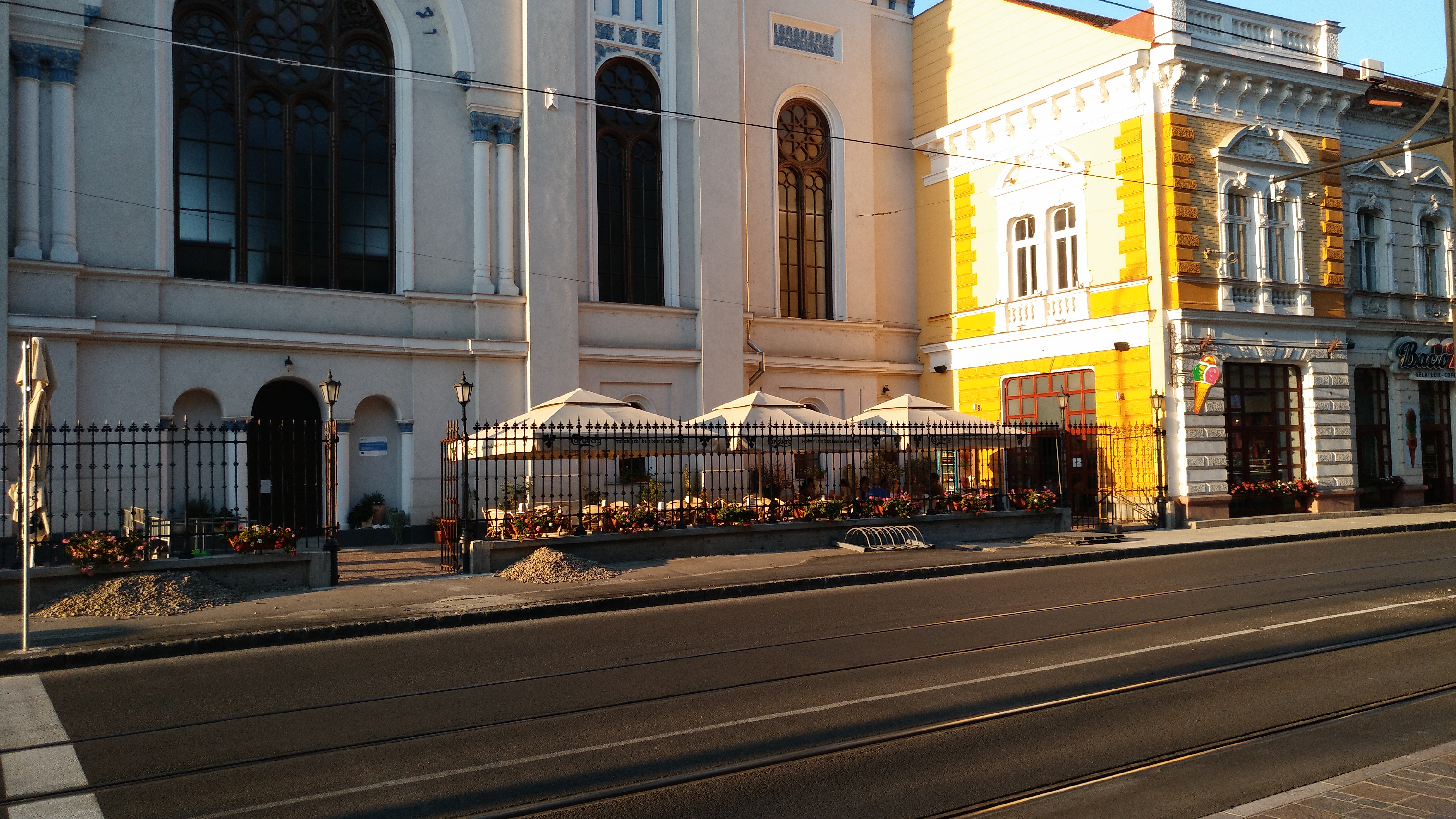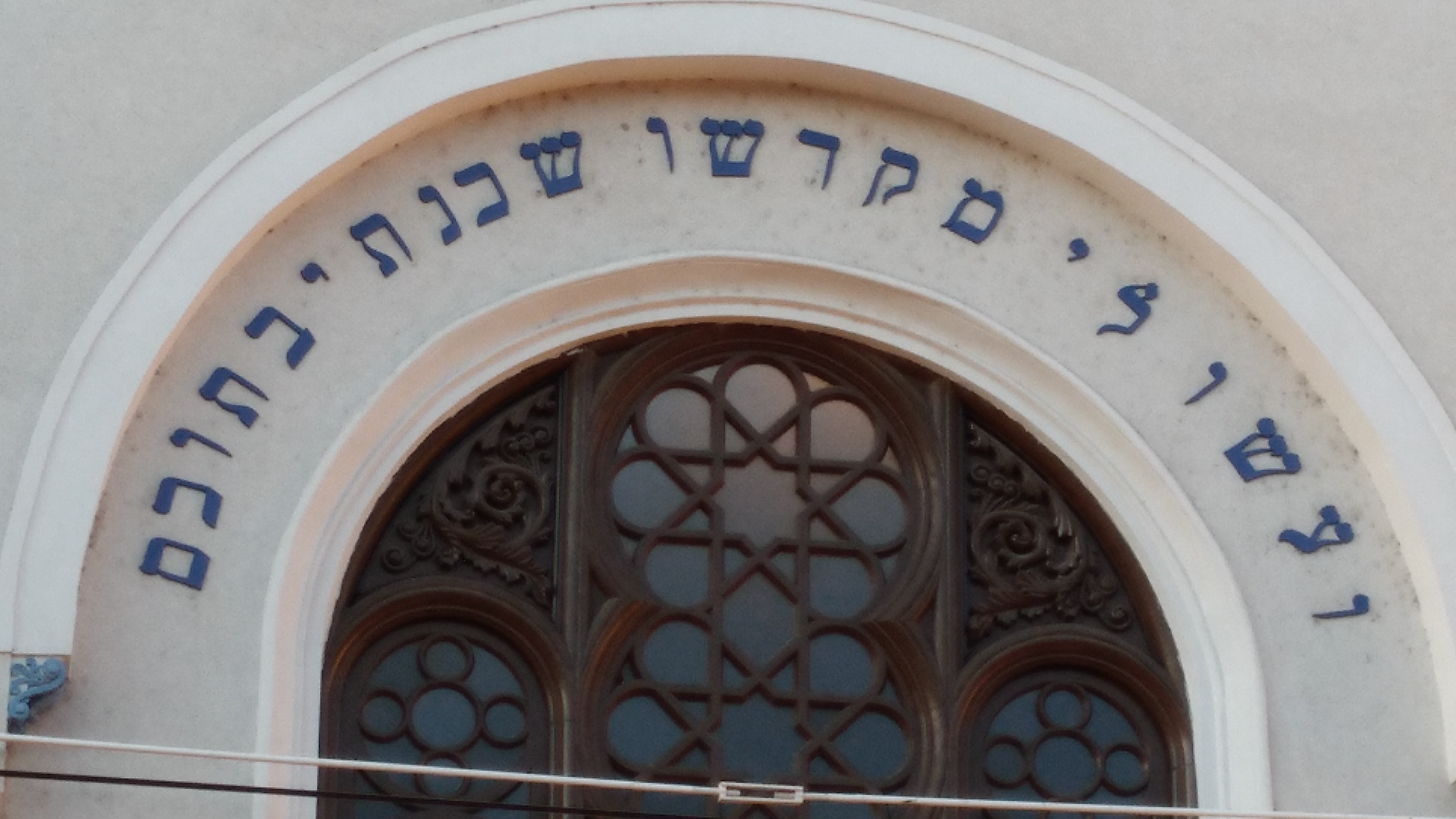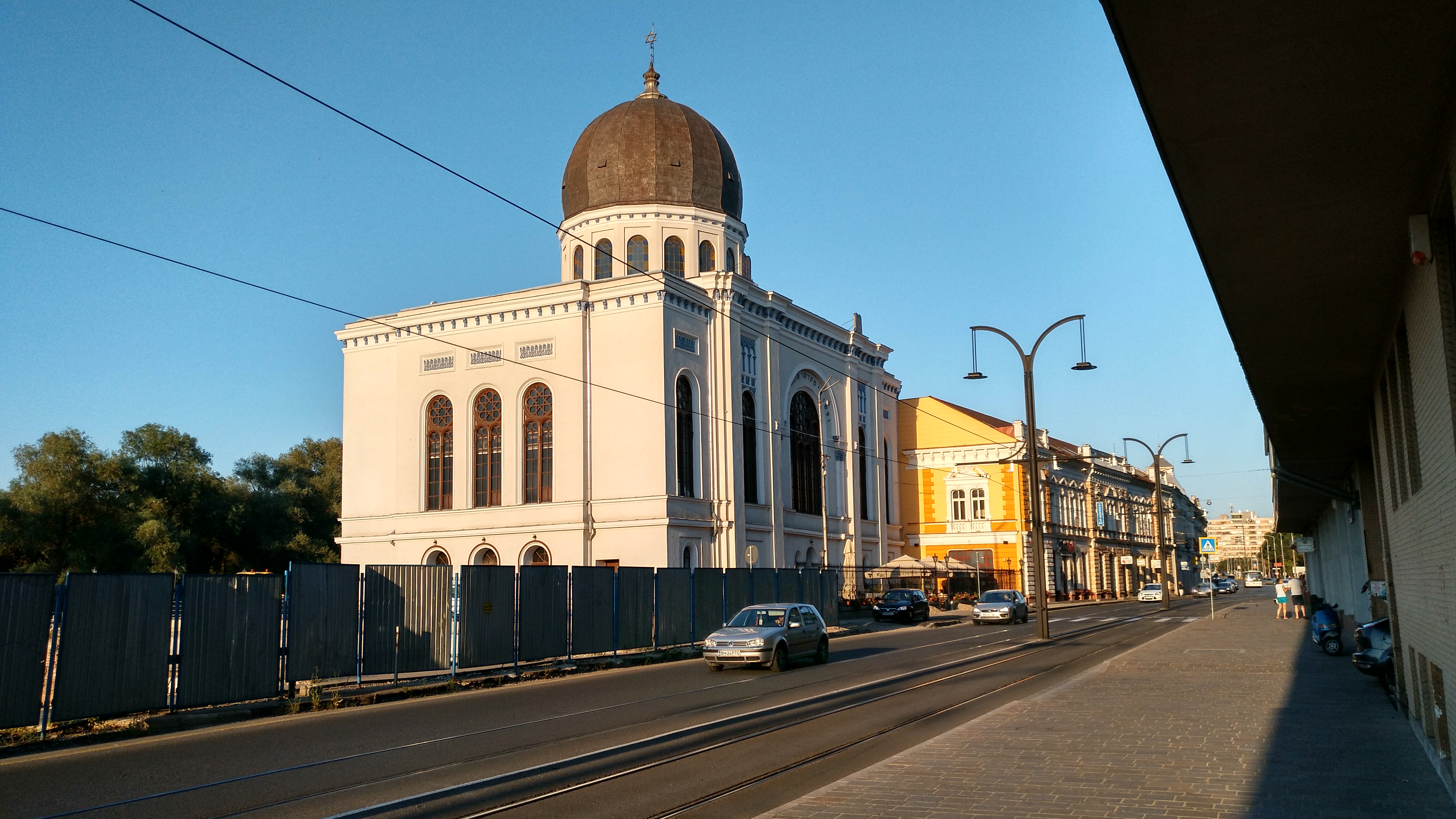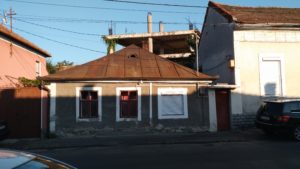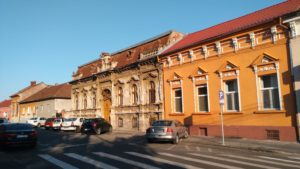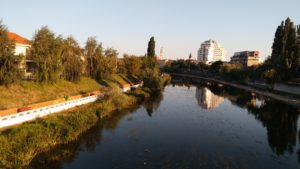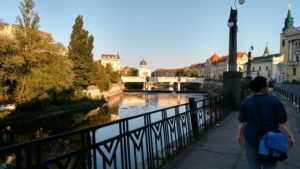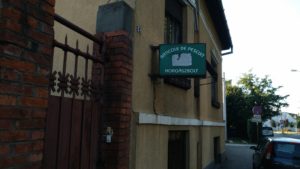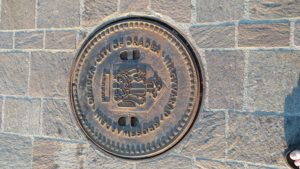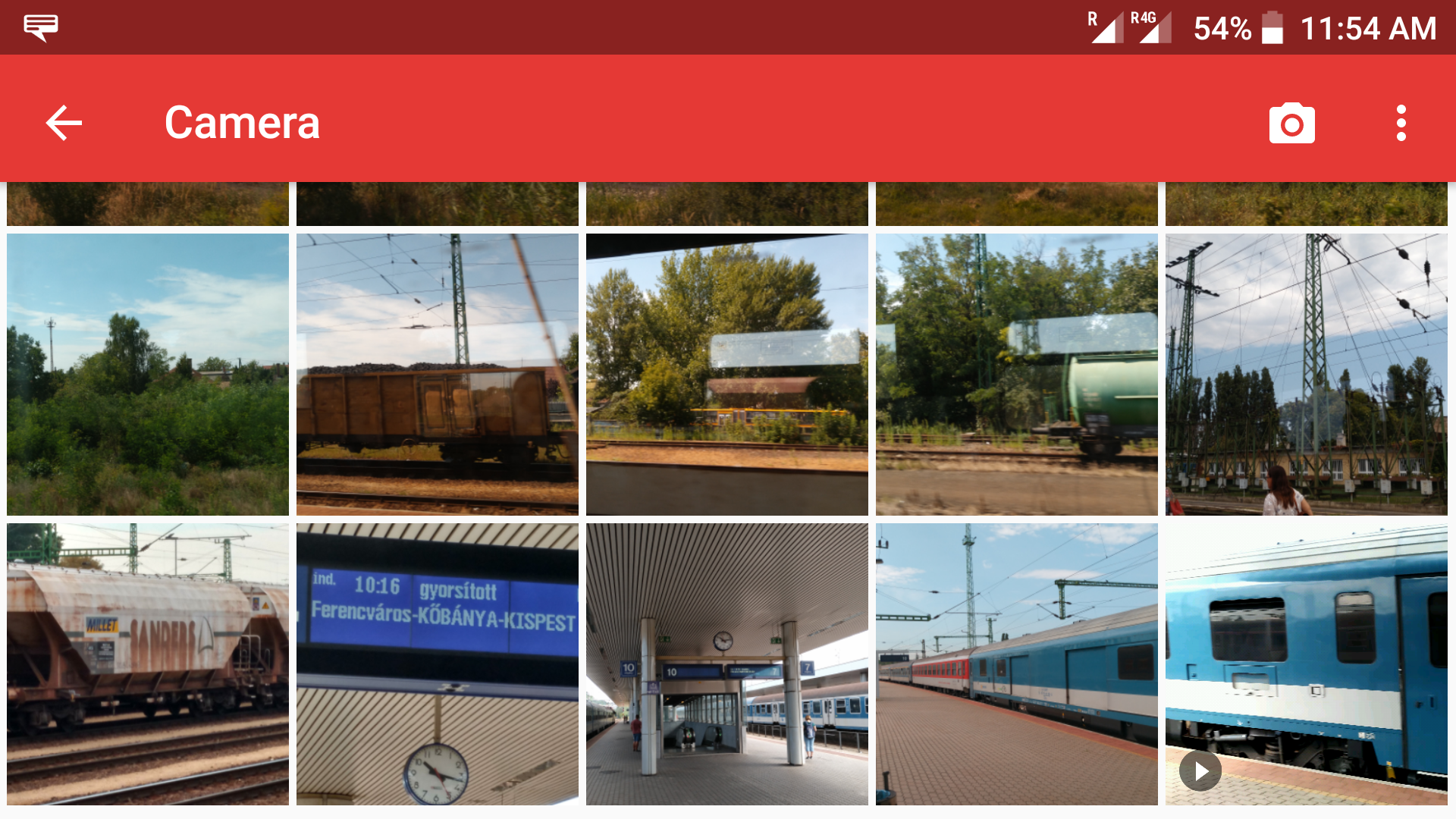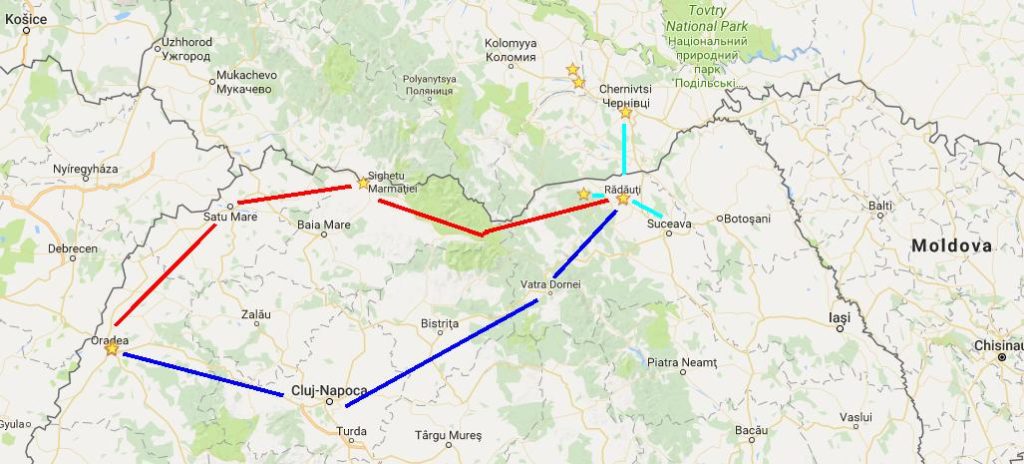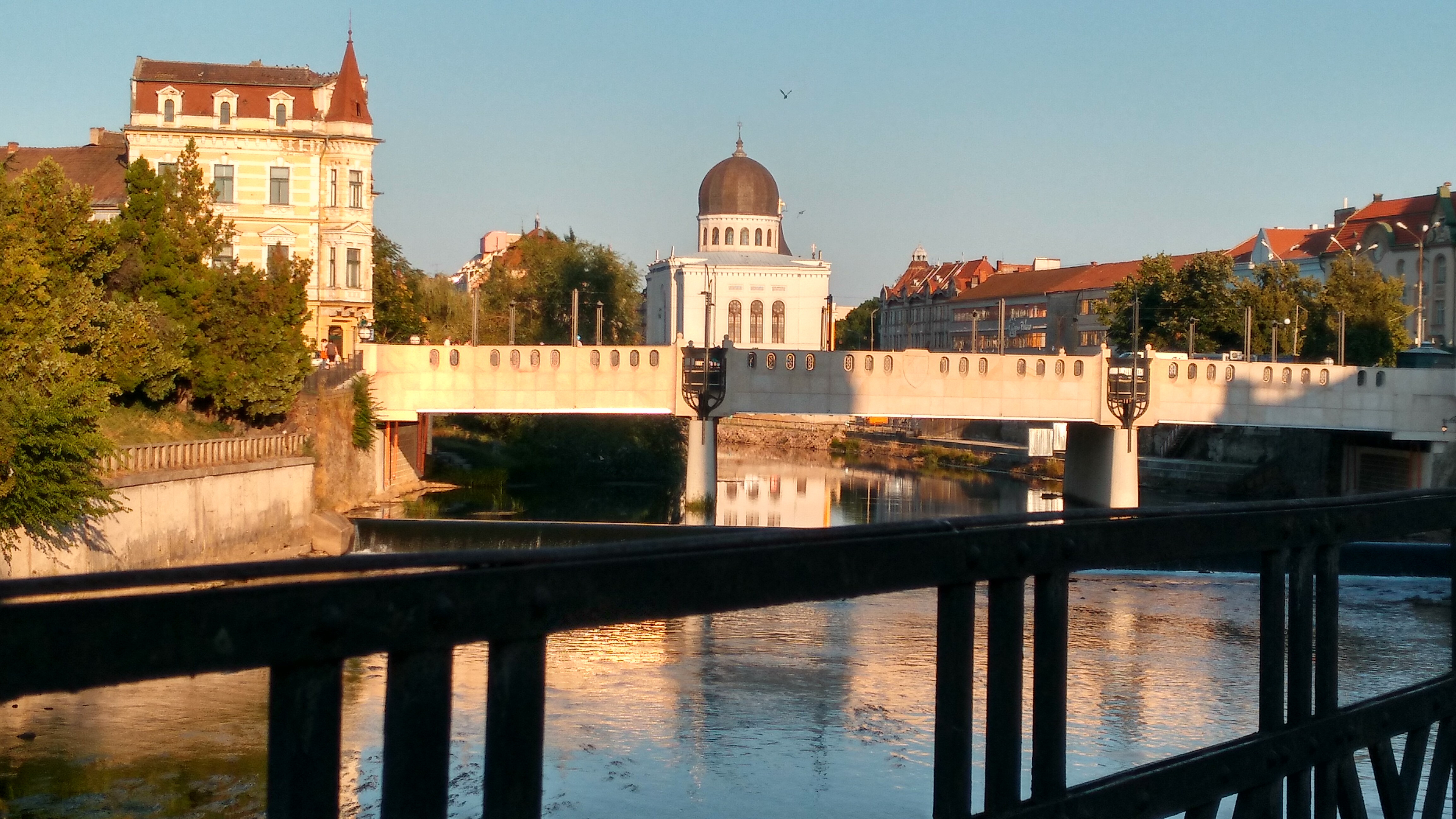
Somewhat similar to the Jewish Reform movement that evolved in Germany during the 19th century, the Neolog movement evolved in Hungary.
Oradea being part of the kingdom of Hungary until the accords of Trianon after WWI, has a magnificent Neolog Synagogue right in the center of the city. Nowadays, of course, not much is left of Oradea’s Jewry. (There is, however, a small Orthodox minyan in town and I hope to get to know them an bit on the way back.)
The building now serves as a museum and is open to the public every afternoon from 12pm to 7pm, except on Mondays. It is, thus, open on Shabbes, which some might find befitting a Neolog place.